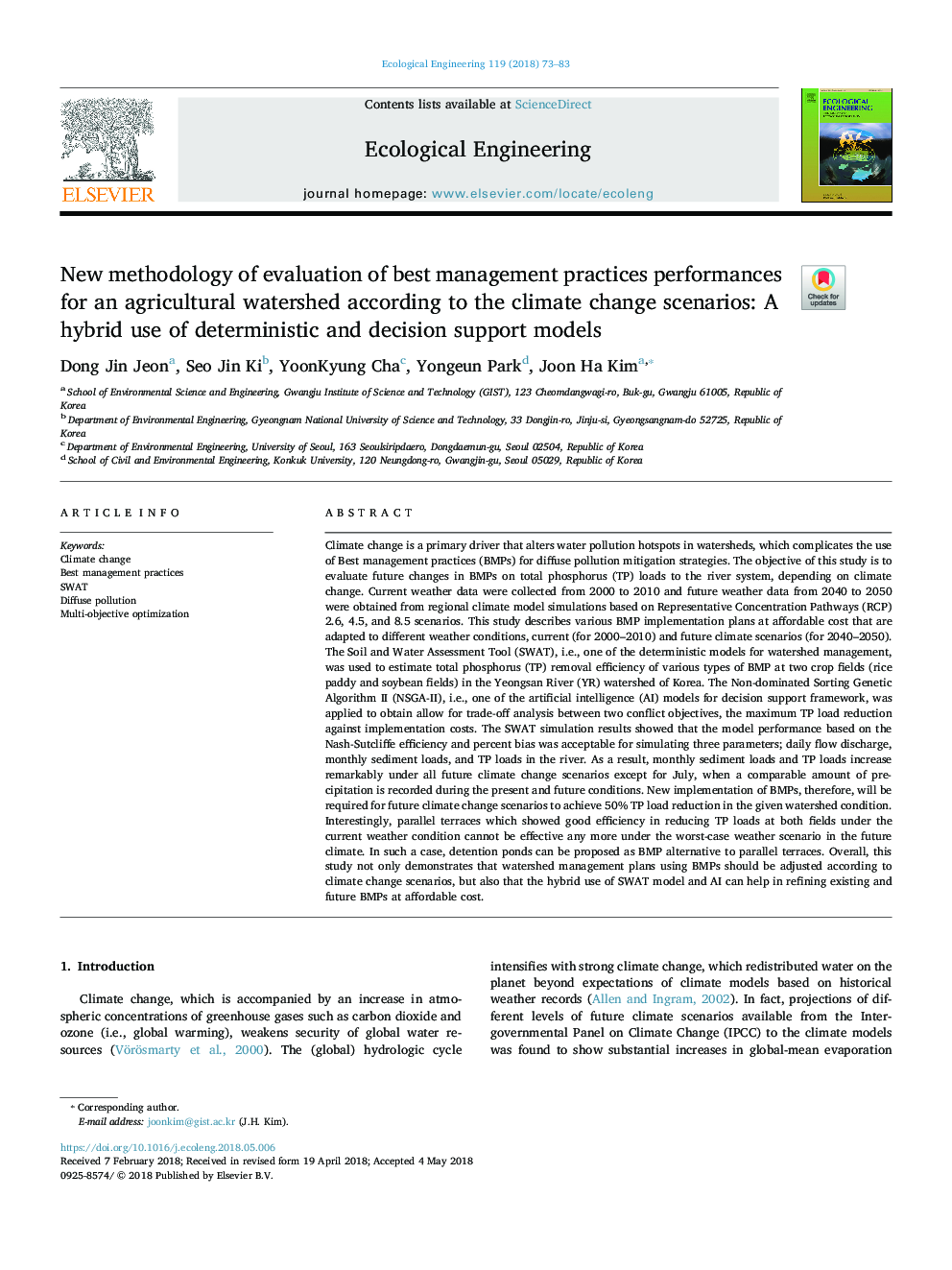| کد مقاله | کد نشریه | سال انتشار | مقاله انگلیسی | نسخه تمام متن |
|---|---|---|---|---|
| 8847786 | 1617983 | 2018 | 11 صفحه PDF | دانلود رایگان |
عنوان انگلیسی مقاله ISI
New methodology of evaluation of best management practices performances for an agricultural watershed according to the climate change scenarios: A hybrid use of deterministic and decision support models
ترجمه فارسی عنوان
روش جدیدی برای ارزیابی بهترین عملکرد های مدیریتی برای یک حوضه کشاورزی بر اساس سناریوهای تغییرات آب و هوایی: استفاده ترکیبی از مدل های پشتیبانی قطعی و تصمیم گیری
دانلود مقاله + سفارش ترجمه
دانلود مقاله ISI انگلیسی
رایگان برای ایرانیان
کلمات کلیدی
موضوعات مرتبط
علوم زیستی و بیوفناوری
علوم کشاورزی و بیولوژیک
بوم شناسی، تکامل، رفتار و سامانه شناسی
چکیده انگلیسی
Climate change is a primary driver that alters water pollution hotspots in watersheds, which complicates the use of Best management practices (BMPs) for diffuse pollution mitigation strategies. The objective of this study is to evaluate future changes in BMPs on total phosphorus (TP) loads to the river system, depending on climate change. Current weather data were collected from 2000 to 2010 and future weather data from 2040 to 2050 were obtained from regional climate model simulations based on Representative Concentration Pathways (RCP) 2.6, 4.5, and 8.5 scenarios. This study describes various BMP implementation plans at affordable cost that are adapted to different weather conditions, current (for 2000-2010) and future climate scenarios (for 2040-2050). The Soil and Water Assessment Tool (SWAT), i.e., one of the deterministic models for watershed management, was used to estimate total phosphorus (TP) removal efficiency of various types of BMP at two crop fields (rice paddy and soybean fields) in the Yeongsan River (YR) watershed of Korea. The Non-dominated Sorting Genetic Algorithm II (NSGA-II), i.e., one of the artificial intelligence (AI) models for decision support framework, was applied to obtain allow for trade-off analysis between two conflict objectives, the maximum TP load reduction against implementation costs. The SWAT simulation results showed that the model performance based on the Nash-Sutcliffe efficiency and percent bias was acceptable for simulating three parameters; daily flow discharge, monthly sediment loads, and TP loads in the river. As a result, monthly sediment loads and TP loads increase remarkably under all future climate change scenarios except for July, when a comparable amount of precipitation is recorded during the present and future conditions. New implementation of BMPs, therefore, will be required for future climate change scenarios to achieve 50% TP load reduction in the given watershed condition. Interestingly, parallel terraces which showed good efficiency in reducing TP loads at both fields under the current weather condition cannot be effective any more under the worst-case weather scenario in the future climate. In such a case, detention ponds can be proposed as BMP alternative to parallel terraces. Overall, this study not only demonstrates that watershed management plans using BMPs should be adjusted according to climate change scenarios, but also that the hybrid use of SWAT model and AI can help in refining existing and future BMPs at affordable cost.
ناشر
Database: Elsevier - ScienceDirect (ساینس دایرکت)
Journal: Ecological Engineering - Volume 119, 15 August 2018, Pages 73-83
Journal: Ecological Engineering - Volume 119, 15 August 2018, Pages 73-83
نویسندگان
Dong Jin Jeon, Seo Jin Ki, YoonKyung Cha, Yongeun Park, Joon Ha Kim,
